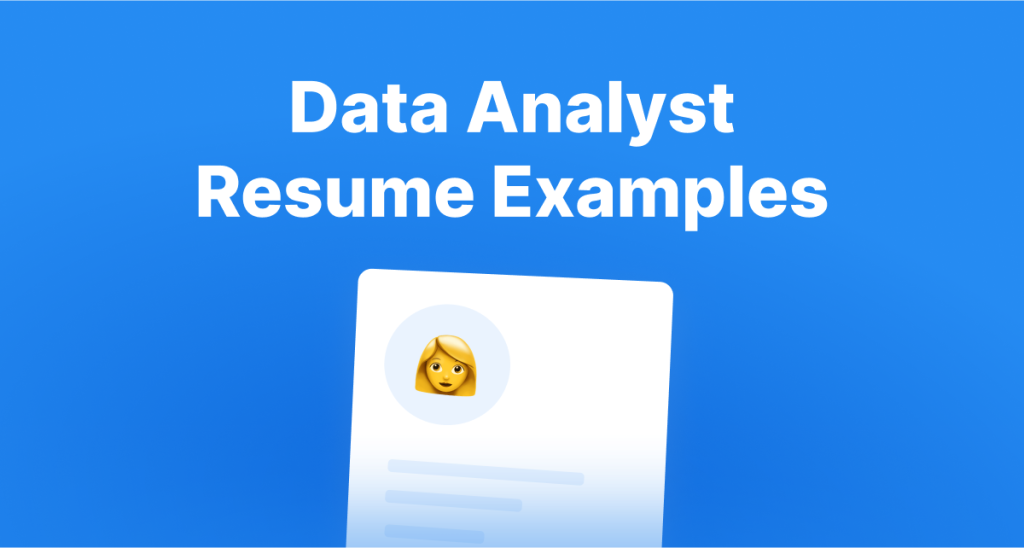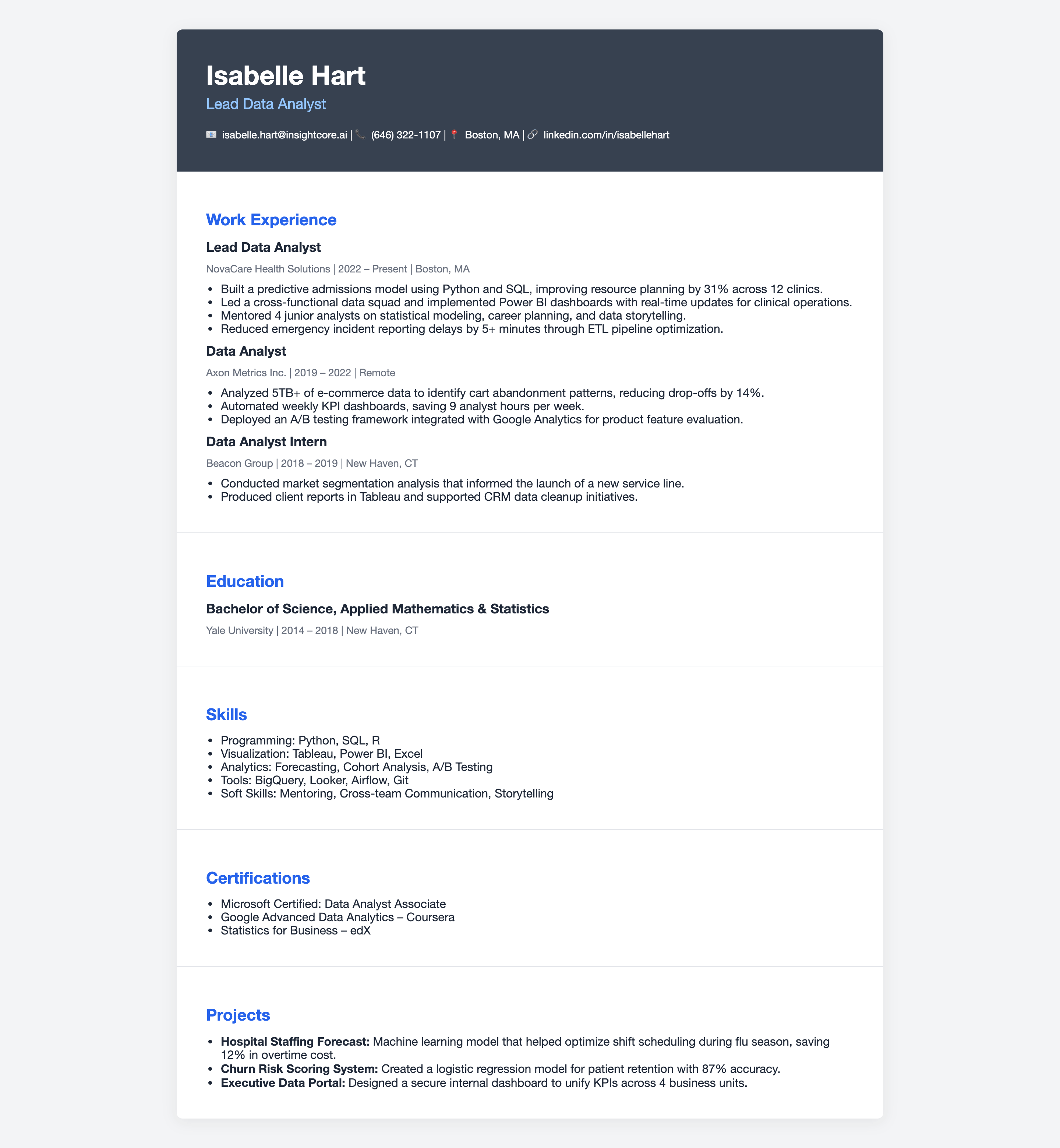
Creating an impressive resume is a vital step for anyone looking to land data analyst jobs. A polished resume not only showcases your skills and experience but also reflects your ability to communicate effectively and present data in a compelling manner. In this guide, we will delve into various examples of resumes tailored for data analyst positions. You’ll discover key tips and strategies to help you stand out from the crowd and catch the eye of hiring managers eager to fill those roles.
Table of Contents
Crafting a standout resume for a data analyst position is more than just selecting a snazzy template. It’s a nuanced process that requires thoughtful personalization and meticulous attention to detail. A well-structured resume can be your ticket to landing interviews, showcasing not just your technical skills but also your analytical prowess and problem-solving abilities.
Your resume should begin with a clear and professional header that includes your name, phone number, email address, and LinkedIn profile (if applicable). This is your first introduction to potential employers, so make it count. Ensure that your name stands out, using a larger font size to draw attention. Avoid using unprofessional email addresses, as this could create a negative first impression.
Next, consider writing a brief summary or objective statement. This section should encapsulate your career goals and what you bring to the table. Unlike a generic statement, tailor this section to reflect the specific data analyst role you are targeting. Highlight key skills such as data visualization, statistical analysis, or experience with specific tools like SQL or Python. A well-crafted summary can quickly convey your fit for the position.
Clearly outline your technical and soft skills that are pertinent to data analysis. Divide them into categories if necessary, such as programming languages (like R or Python), data tools (like Tableau or Excel), and analytical skills. Be honest and avoid exaggeration; employers appreciate authenticity. Remember that listing skills is not enough; think about how you can demonstrate these competencies in your work history.
In the experience section, list your relevant jobs in reverse chronological order. Use bullet points to describe your responsibilities and achievements, focusing on measurable outcomes wherever possible. For instance, instead of saying “analyzed data,” try “utilized SQL to analyze sales data, leading to a 15% increase in quarterly revenue.” This not only shows what you did but also illustrates the impact of your work.
Include your educational qualifications, especially if you have a degree in a relevant field such as statistics, mathematics, or computer science. Don’t forget to mention any certifications that could give you a competitive edge, like Certified Analytics Professional (CAP) or Google Data Analytics Professional Certificate. If you’ve taken relevant courses or attended workshops, consider adding those as well.
If applicable, showcase specific projects that demonstrate your analytical skills. These can include independent projects, coursework, or contributions to team initiatives. Provide links to online portfolios or GitHub repositories where potential employers can see your work in action. This practical evidence of your skills can be a powerful addition to your resume.
Finally, never underestimate the importance of proofreading. Spelling and grammatical errors can undermine your professionalism and attention to detail. After proofreading, take a moment to customize your resume for each job application. Use keywords from the job description to align your resume with what the employer is seeking. This not only helps you stand out but also increases your chances of passing through Applicant Tracking Systems.
To thrive as a data analyst, a blend of technical and soft skills is vital. These competencies not only empower professionals to interpret complex data but also facilitate effective communication of insights to stakeholders.
In the ever-evolving field of data analytics, having the right certifications can significantly boost your career prospects. These credentials not only enhance your credibility but also showcase your expertise to potential employers. A well-chosen certification can elevate your resume, making it a powerful tool in your job search arsenal.
Creating an effective resume is key to landing your dream data analyst position. This section breaks down the essential elements of a resume, guiding you through each part with actionable tips to help you stand out from the competition. Whether you’re a seasoned professional or just starting, understanding how to structure your resume is crucial for showcasing your skills and experiences effectively.
The header is the first thing potential employers see, making it vital for setting the tone of your resume. A well-structured header should include your full name, contact information, and links to professional platforms, like LinkedIn or a personal portfolio. This section is crucial because it ensures hiring managers can quickly reach out to you and understand your professional identity at a glance.
Good Example:
Jane Doe
(123) 456-7890
jane.doe@email.com
LinkedIn: linkedin.com/in/janedoe
Portfolio: janedoeportfolio.com
Bad Example:
JD
1234 Elm St
Email: janedoe123@gmail.com
The summary section serves as your elevator pitch, giving employers a snapshot of your qualifications and what you bring to the table. A concise and impactful summary tailored to data analyst roles can highlight your strengths and career goals effectively. Aim for 2-4 sentences that summarize your key skills, relevant experiences, and what you’re looking for in your next position.
Good Example:
Results-driven Data Analyst with over 5 years of experience in interpreting data and generating actionable insights. Proficient in SQL, Python, and data visualization tools, with a proven record of improving operational efficiency by 30% through data-driven decision-making.
Bad Example:
I am a data analyst looking for a job. I have some experience and skills in data analysis and would like to work for a great company.
The experience section is where you can truly shine by emphasizing your achievements and quantifiable results. When crafting this section, use strong action verbs and tailor your descriptions to match the job description you’re applying for. Focus on what you’ve accomplished and how it relates to data analytics, showcasing your ability to deliver results through data-driven strategies.
Good Example:
Data Analyst | XYZ Corp | June 2019 – Present
– Spearheaded a project that utilized predictive analytics to forecast sales trends, resulting in a 25% increase in quarterly revenue.
– Developed interactive dashboards that streamlined reporting processes, reducing report generation time by 40%.
Bad Example:
Worked as a data analyst at XYZ Corp. My job involved analyzing data and preparing reports. I helped the team with various projects.
Presenting your educational background effectively is crucial, especially for data analyst roles where specific degrees or certifications can be significant. Include relevant degrees, certifications, and coursework that demonstrate your knowledge in statistics, data analysis, and programming. Additionally, mentioning honors, GPA (if impressive), or additional training programs can help you stand out in a competitive job market.
Good Example:
Bachelor of Science in Data Analytics | University of ABC | Graduated May 2020
– Relevant Coursework: Statistical Analysis, Machine Learning, Database Management Systems
– GPA: 3.8/4.0
Bad Example:
College Degree | ABC University | 2020
Crafting a standout resume is crucial for landing a data analyst role in today’s competitive job market. This section provides several resume examples that illustrate the right structure and content for data analyst positions, catering to various experience levels. Whether you’re just starting your career, have some experience under your belt, or are a seasoned professional, these examples will guide you in creating a compelling resume that highlights your skills and achievements.
Jane Smith 123 Main St., Cityville, ST 12345 (123) 456-7890 jane.smith@email.com LinkedIn: linkedin.com/in/janesmith Professional Summary Detail-oriented data analyst with a strong foundation in statistical analysis and data visualization. Adept at transforming complex data into actionable insights across various industries. Exceptional problem-solving skills and a passion for data-driven decision-making. Core Competencies - Data Analysis & Interpretation - Statistical Modeling - Data Visualization (Tableau, Power BI) - SQL & Database Management - Excel & Advanced Formulas - Communication & Collaboration Professional Experience Data Analyst Intern XYZ Corp, Cityville, ST | June 2021 – August 2021 - Assisted in analyzing customer data to identify trends, leading to a 10% increase in customer engagement. - Created interactive dashboards using Tableau, improving reporting efficiency by 30%. - Collaborated with cross-functional teams to understand their data needs and provided tailored solutions. Education Bachelor of Science in Data Science University of Cityville, Cityville, ST | Graduated May 2021

Michael Johnson 456 Elm St., Townsville, ST 67890 (987) 654-3210 michael.johnson@email.com LinkedIn: linkedin.com/in/michaeljohnson Professional Summary Results-driven data analyst with over 7 years of experience in leveraging data analytics to drive business growth and enhance operational efficiency. Proven track record of managing complex projects and leading data-driven initiatives to achieve significant revenue gains. Core Competencies - Advanced Data Analytics (Python, R) - Predictive Modeling & Machine Learning - Stakeholder Engagement & Leadership - Data Warehousing & ETL Processes - Business Intelligence Tools (Looker, Qlik) - Strong Presentation Skills Professional Experience Senior Data Analyst ABC Solutions, Townsville, ST | January 2018 – Present - Spearheaded a data-driven project that optimized marketing strategies, resulting in a 25% increase in ROI. - Led a team of analysts to develop predictive models, enhancing customer retention rates by 15%. - Established best practices for data governance, improving data quality and accessibility across departments. Data Analyst DEF Technologies, Townsville, ST | May 2015 – December 2017 - Conducted in-depth analyses of sales data, identifying key trends that contributed to a 20% growth in revenue. - Developed automated reporting systems, reducing reporting time by 40%. - Collaborated with IT to improve data collection processes, enhancing accuracy and reliability. Education Master of Science in Data Analytics State University, Townsville, ST | Graduated May 2015

Emily Davis 789 Oak St., Villageton, ST 23456 (555) 123-4567 emily.davis@email.com LinkedIn: linkedin.com/in/emilydavis Professional Summary Motivated and analytical recent graduate with a Bachelor’s degree in Data Science. Eager to apply theoretical knowledge and skills in a practical data analyst role. Strong foundation in statistical analysis, programming, and data manipulation. Core Competencies - Data Analysis (Excel, SQL) - Statistical Software (R, Python) - Data Visualization (Tableau) - Research & Analytical Skills - Team Collaboration - Problem-Solving Professional Experience Data Analyst Intern GHI Enterprises, Villageton, ST | January 2023 – April 2023 - Assisted in data cleaning and preprocessing for large datasets, improving data quality for analysis. - Supported the creation of visual reports that highlighted key performance metrics for management. - Participated in team meetings to discuss data findings and recommend actionable strategies. Education Bachelor of Science in Data Science University of Villageton, Villageton, ST | Graduated December 2022 Relevant Coursework - Data Mining and Analysis - Database Management Systems - Statistical Methods for Data Science
